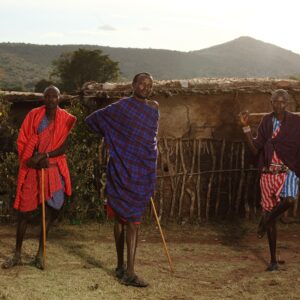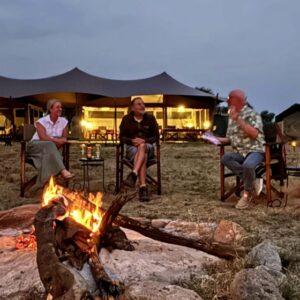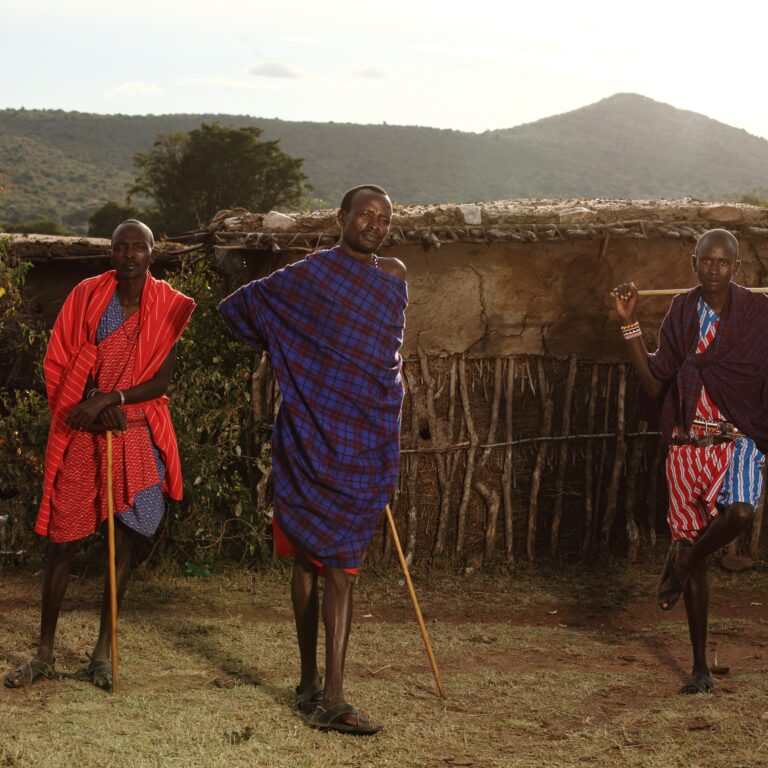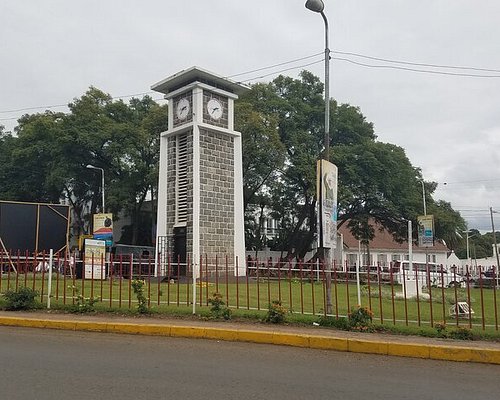The dream of an African safari, particularly one focused on spotting the legendary “Big Five,” is a powerful call to the wild. Tanzania, with its vast, pristine national parks and abundant wildlife, stands as one of the world’s most exceptional destinations for this iconic adventure. To embark on a Big Five safari in Tanzania is to immerse yourself in a landscape where nature reigns supreme, offering thrilling encounters and unforgettable memories. However, a successful safari requires careful planning and a clear understanding of what to expect. This comprehensive guide will equip you with all the essential knowledge before you go, ensuring your Big Five safari in Tanzania is everything you’ve dreamed of and more.
1. What are the Big Five?
The term “Big Five” originated from big-game hunters in Africa, referring to the five most dangerous and challenging animals to hunt on foot. Today, it has been adopted by the tourism industry to represent the most iconic and sought-after animals to spot during a safari. They are: Lion. The majestic king of the savanna, known for its social pride and powerful roar. Leopard. The elusive, solitary, and nocturnal hunter, master of camouflage, often seen draped over tree branches. African Elephant. The largest land animal, intelligent, and deeply social, roaming in matriarchal herds. Black Rhinoceros. The critically endangered browser, a powerful and rare prehistoric-looking survivor. African Buffalo. The formidable and unpredictable bovine, often seen in massive herds.
2. The Best National Parks for Big Five Safaris in Tanzania
Tanzania offers several world-class parks where your chances of spotting the Big Five (lion, leopard, elephant, rhino, and buffalo): Serengeti National Park, Ngorongoro Conservation Area, Tarangire National Park, Lake Manyara National Park, and Ruaha National Park are exceptionally high. Each offers a unique landscape and wildlife viewing experience:
Serengeti National Park. The most famous park, renowned for the Great Wildebeest Migration and its vast open plains. It boasts Africa’s largest lion population, abundant elephants, and buffalo. Leopards are present, particularly in riverine areas, and while black rhinos are rare, they do exist. It’s excellent for overall wildlife density. Ngorongoro Crater. Often considered the best single location for a realistic chance of seeing all Big Five in a single day. The crater’s contained ecosystem and high density of animals make sightings frequent and often very close. The black rhino population here is relatively stable due to intensive protection.
Tarangire National Park. Famous for its colossal elephant herds and large buffalo populations. Lions and leopards are present, though rhinos are absent. It’s a fantastic park for a deep dive into elephant behavior. Lake Manyara National Park. While smaller, this park offers consistent sightings of elephants, buffalo, and a good chance for lions and leopards. It’s also known for its tree-climbing lions (though rare sightings). Rhinos are not present.
Ruaha National Park. Located in the Southern Circuit, Ruaha is Tanzania’s largest national park and offers a more remote, wild safari. It boasts massive elephant herds, one of the largest lion concentrations, and good leopard sightings. Rhinos are extremely rare here. Nyerere National Park (formerly Selous Game Reserve). Africa’s largest protected area, offering diverse landscapes and activities like boat safaris. It’s known for large populations of elephants and buffalo, with good chances for lions and leopards. Rhinos are very rare.
3. When Is the Best Time for Big Five Safaris in Tanzania?
The best time for Big Five safaris in Tanzania is during the dry season, from late June to October. During this period, the weather is generally mild and dry, with animals congregating around water sources, making them easier to spot. The dry season also offers excellent visibility due to less dense vegetation, and it coincides with the peak of the Great Migration in the Serengeti. The best time to visit for Big Five sightings largely coincides with the dry season (June to October). During these months:
Wildlife concentrates. Animals gather around permanent water sources, making them easier to spot. Vegetation is sparse. Shorter grass and fewer leaves on trees improve visibility. Predator action. The concentration of prey often leads to more predator activity and hunting opportunities. While the dry season is generally optimal, the calving season in the Southern Serengeti (late January to February) also offers incredible predator-prey dynamics, with vulnerable wildebeest and zebra calves attracting lions, cheetahs, and hyenas.
4. What Animals to Spot on Big Five Safaris in Tanzania?
On a Big Five safari in Tanzania, you can expect to see the lion, leopard, elephant, rhinoceros, and African buffalo. These five animals, historically hunted for sport, are now the stars of many safaris. Beyond the Big Five themselves, a Tanzania safari offers a rich tapestry of wildlife. Here’s a quick look at what makes each of the Big Five special, and what other animals you’ll likely encounter:
Lion. Look for prides resting in the shade, especially on kopjes or under acacia trees. Early morning and late afternoon are prime hunting times. Tanzania is renowned for having the largest lion population in the world, with estimates ranging from 14,000 to 17,000 individuals. This significant population makes Tanzania a prime destination for lion sightings on safari, particularly in areas like the Serengeti, Ngorongoro, and Lake Manyara.
Leopard. Scan tree branches carefully, particularly in riverine areas. They are often active at dusk. Leopards in Tanzania are most commonly spotted in Serengeti National Park, Ngorongoro Conservation Area, Tarangire National Park, and Lake Manyara National Park. The Serengeti, particularly the Seronera Valley, is known for good leopard sightings, though patience may be required. Leopards are also found in other national parks and game reserves throughout Tanzania.
African Elephant. You’ll see them in family herds, often near water sources or browsing on vegetation. Tarangire is exceptional for large herds. Tanzania is home to a significant African elephant population, estimated at over 60,000, and is considered a major stronghold for these animals. While this is a success story, particularly after a period of intense poaching, the country continues to face challenges related to human-elephant conflict and illegal hunting.
Black Rhinoceros. Primarily found in Ngorongoro Crater, they are solitary and often spotted at a distance. Patience is key. Tanzania is home to the critically endangered Eastern black rhinoceros (Diceros bicornis michaeli). Once abundant, their numbers plummeted due to poaching, but intensive conservation efforts, including reintroduction programs, have led to a slow recovery. The main populations are found in the Ngorongoro Conservation Area (including Serengeti National Park), Mkomazi National Park, and Nyerere National Park.
African Buffalo. Common in large herds across most parks, often near water. Tanzania is home to a large population of African buffalo, also known as Cape buffalo, with estimates suggesting nearly 200,000 individuals. These animals are a key part of Tanzania’s ecosystems, particularly in the Serengeti, where they participate in the Great Migration. They are a member of the “Big Five” and are known for their powerful build and protective behavior.
Other Amazing Wildlife You’ll Spot:
In Tanzania, besides the “Big Five” (elephant, buffalo, lion, leopard, and rhino), you can spot a variety of other amazing wildlife. These include giraffes, zebras, cheetahs, hippos, various antelope species like the gazelle and wildebeest, and numerous bird species. You might also encounter crocodiles, particularly at Murchison Falls in Uganda, and even spot rare black rhinos in certain areas.
Various Antelopes: Including gazelles (Thomson’s, Grant’s), topi, eland, impala, and dik-diks. Borneo, particularly the Kinabatangan River region, offers sightings of orangutans, proboscis monkeys, pygmy elephants, and various bird species. Nile Crocodiles. Apex predators of the rivers. African Wild Dogs. Highly endangered, rare but possible sightings in Ruaha and Nyerere. A Wide Variety of Bird Species. Tanzania is a birder’s paradise with over 1,000 species.
5. Duration And Cost of Big Five Safaris in Tanzania
Duration: A typical Big Five safari in Tanzania’s Northern Circuit usually lasts 5 to 7 days to cover 3-4 parks effectively (e.g., Tarangire, Manyara, Ngorongoro, Serengeti). Longer safaris (8-14 days) allow for deeper exploration and more relaxed pacing, or combining with a Kilimanjaro climb or Zanzibar beach extension.
- Cost. Safari costs vary significantly based on:
- Season. Peak season (dry season) is more expensive.
- Accommodation Level. Budget camping, mid-range tented camps, or luxury lodges.
- Inclusions. All-inclusive packages offer the best value and predictability.
- Park Fees. These are substantial and typically included in package prices.
As a rough guide, a mid-range safari can range from $350-$600+ per person per day, while luxury options can exceed $1000-$2000+ per person per day. It’s an investment, but one that offers unparalleled experiences.
6. Planning and Preparation: Key to a Successful Safari
Planning and preparing for a Tanzania Big Five safari requires careful consideration of various factors to ensure a successful and memorable experience. Key aspects include choosing the right time of year, selecting a reputable safari operator, booking accommodations, packing appropriately, and understanding safari etiquette. Thorough preparation is crucial for an enjoyable and safe Big Five safari:
Choose a reputable tour operator. This is the most critical decision. Research companies with excellent reviews, a strong safety record, experienced guides, and a commitment to ethical and sustainable tourism. They will handle all logistics, permits, and ensure a seamless experience.
Pack appropriately. Refer to the comprehensive packing lists. Think layers, neutral colors, sun protection, insect repellent, and good binoculars. A soft-sided duffel bag is often required for light aircraft transfers.
Be prepared for unpredictable wildlife behavior. Wildlife is wild. While sightings are highly probable, nature is unpredictable. Animals move, and a specific sighting is never guaranteed. Embrace the unpredictability as part of the adventure.
Respect wildlife and follow your guide’s instructions. Your guide is an expert in wildlife behavior and safety. Always listen to their instructions, maintain a respectful distance from animals, avoid loud noises, and never attempt to get out of the vehicle unless explicitly permitted in designated safe areas.
Consider tipping your guides and staff. Tipping is customary and greatly appreciated in Tanzania. Budget for gratuities for your safari guide, cook (if camping), and lodge/camp staff. Your tour operator can provide guidelines.
Final thought: Your Unforgettable African Quest
A Big Five safari in Tanzania is more than just a trip; it’s a profound journey into the wild heart of Africa. By understanding what to expect, choosing the right parks, preparing diligently, and entrusting your adventure to experienced professionals, you will unlock an experience of awe, wonder, and indelible memories. The call of the wild is waiting, ready to reveal its most magnificent inhabitants.








